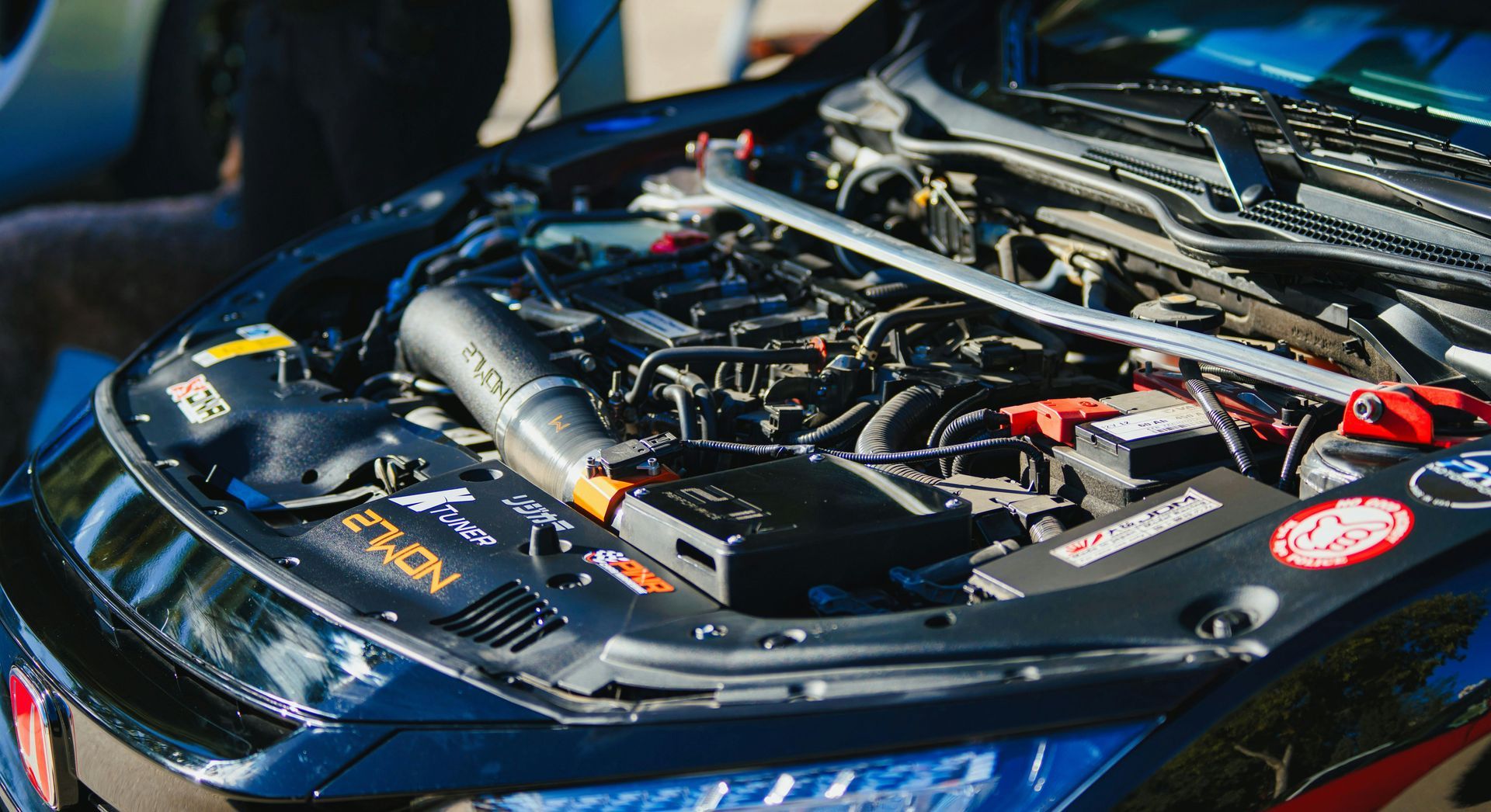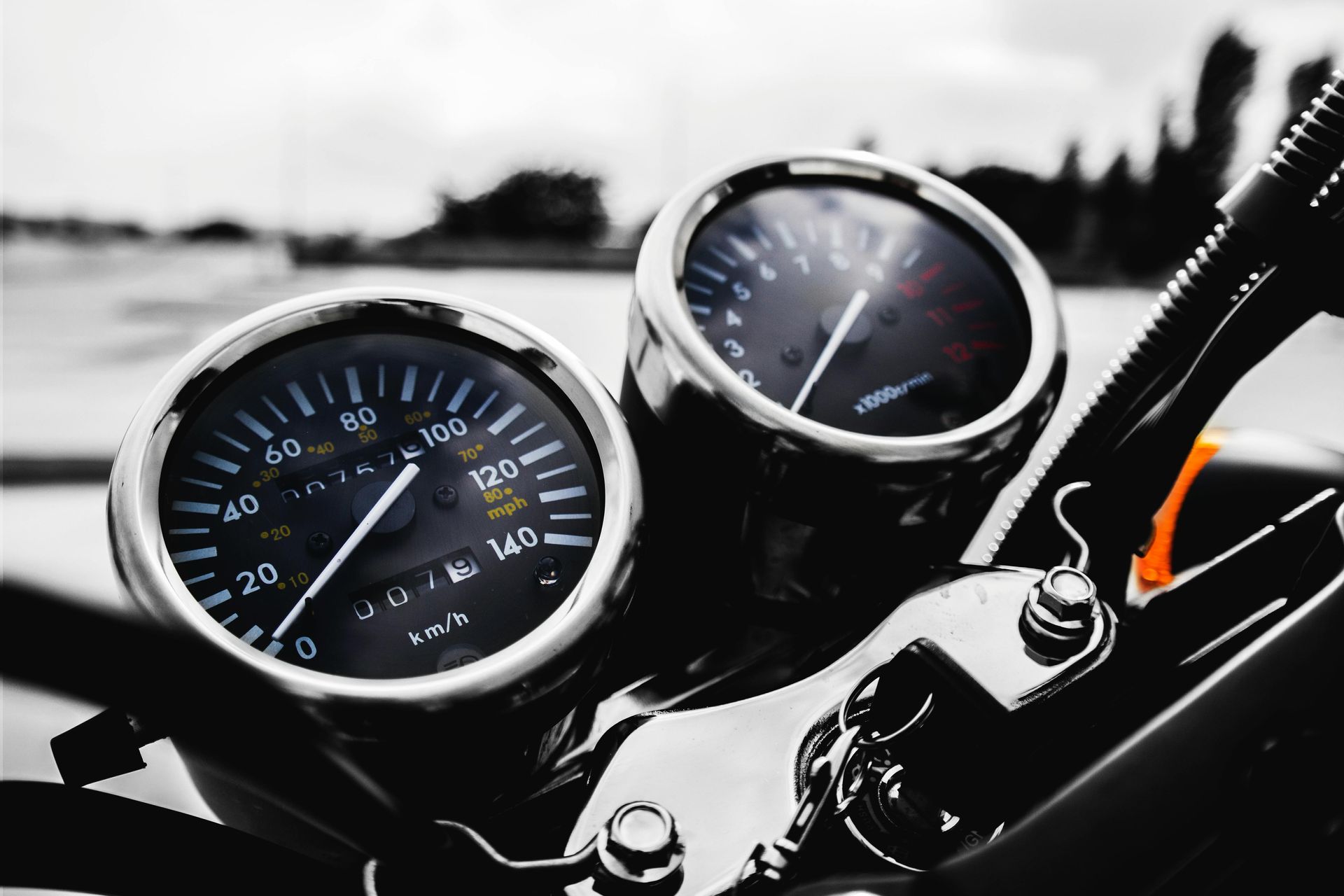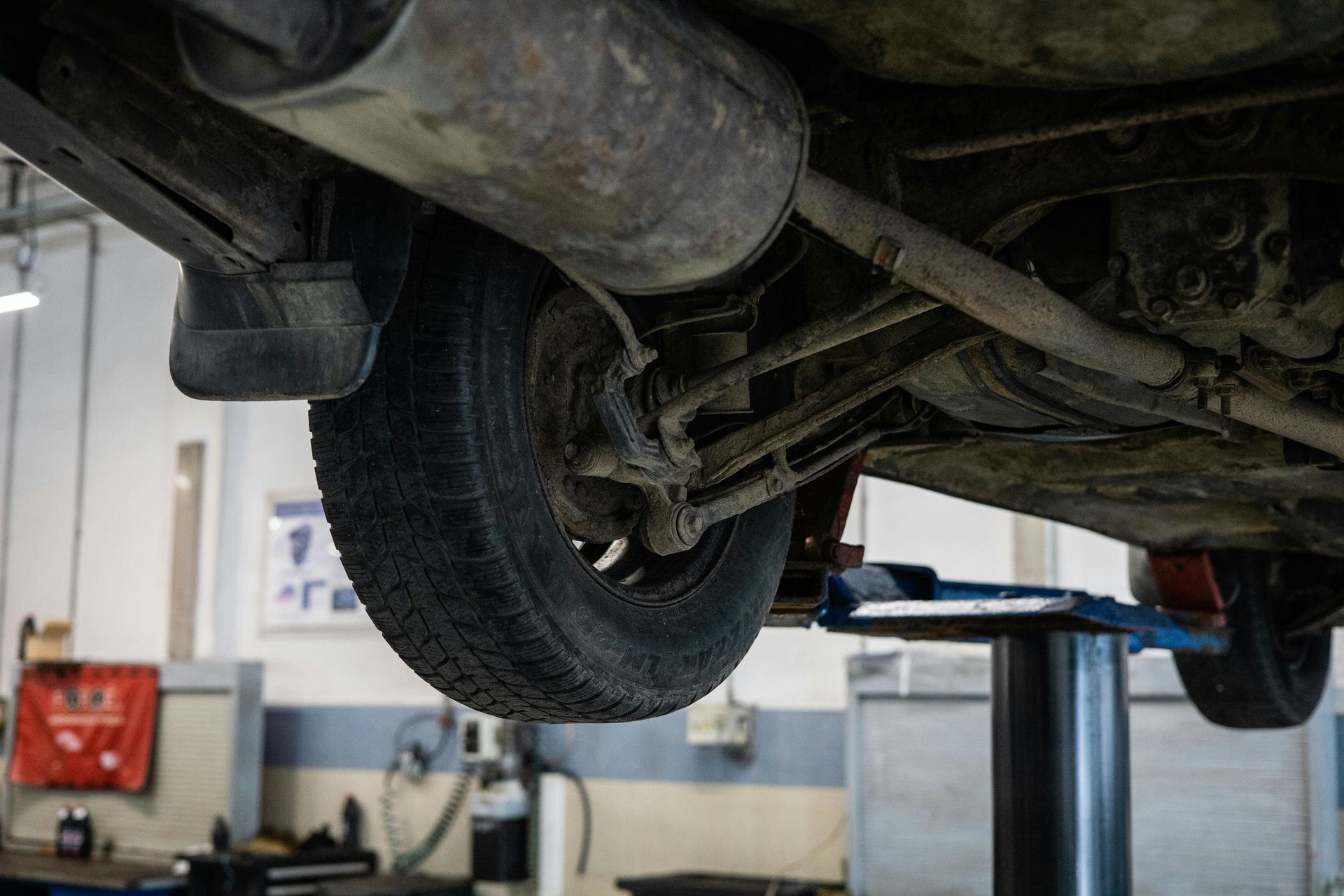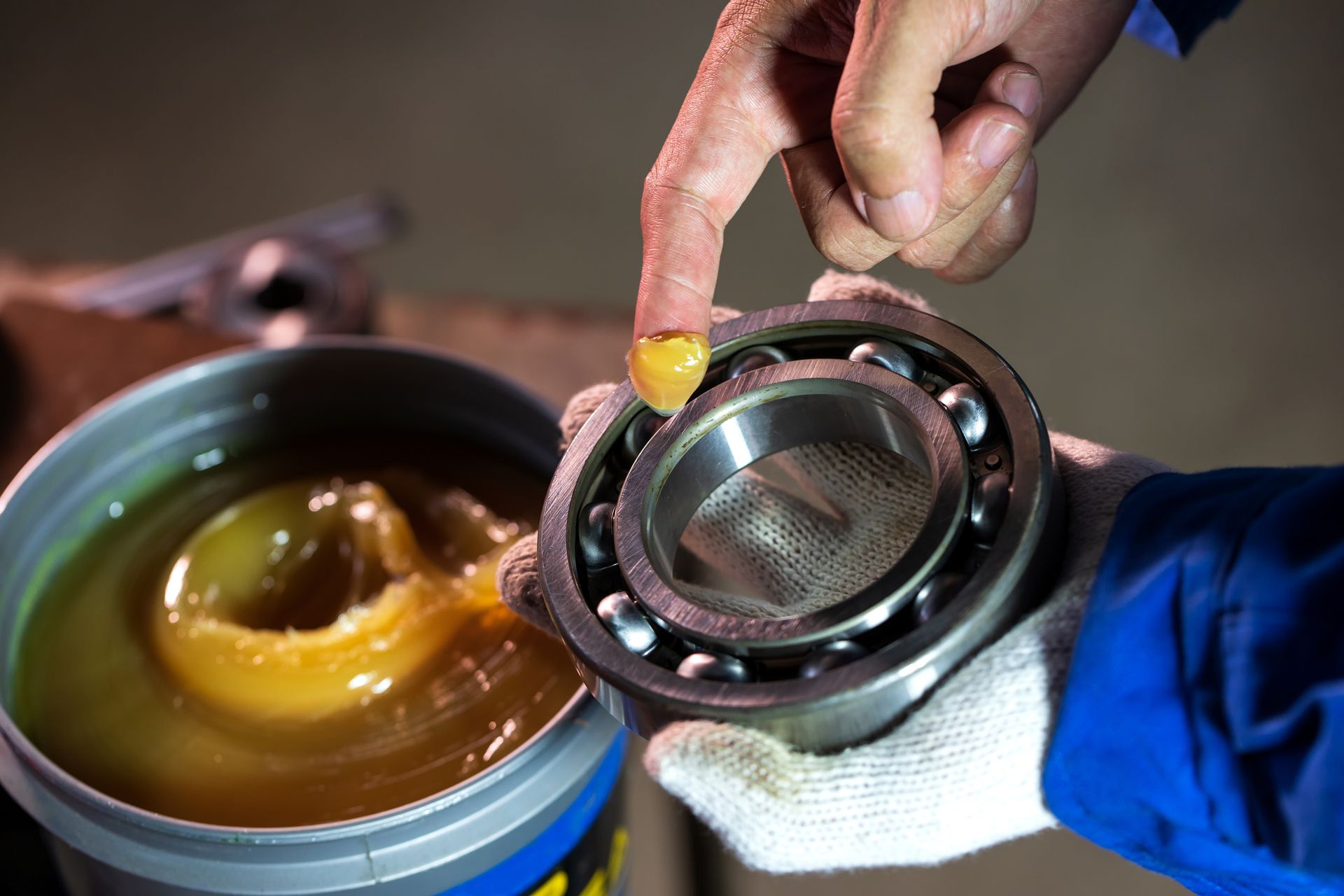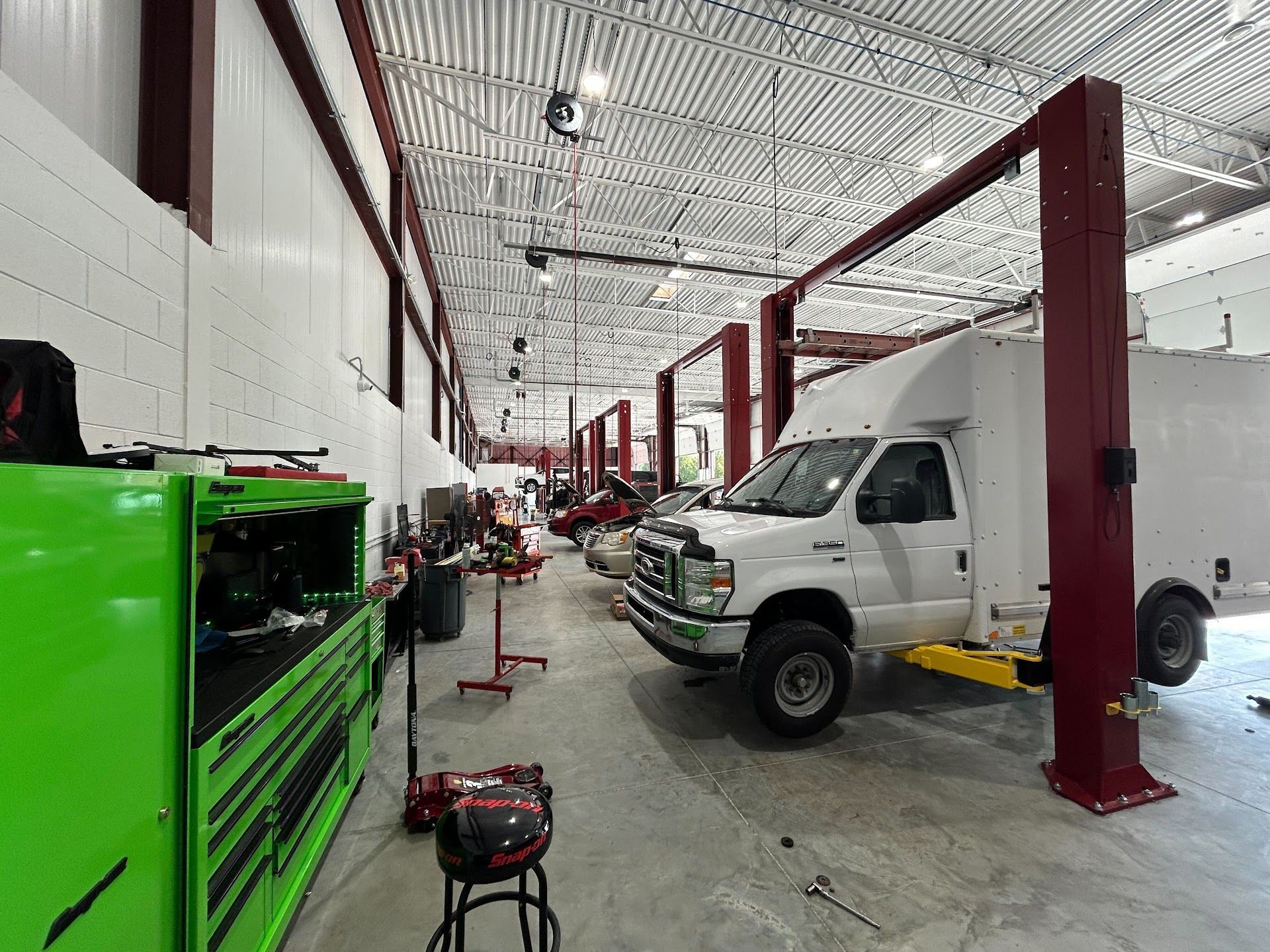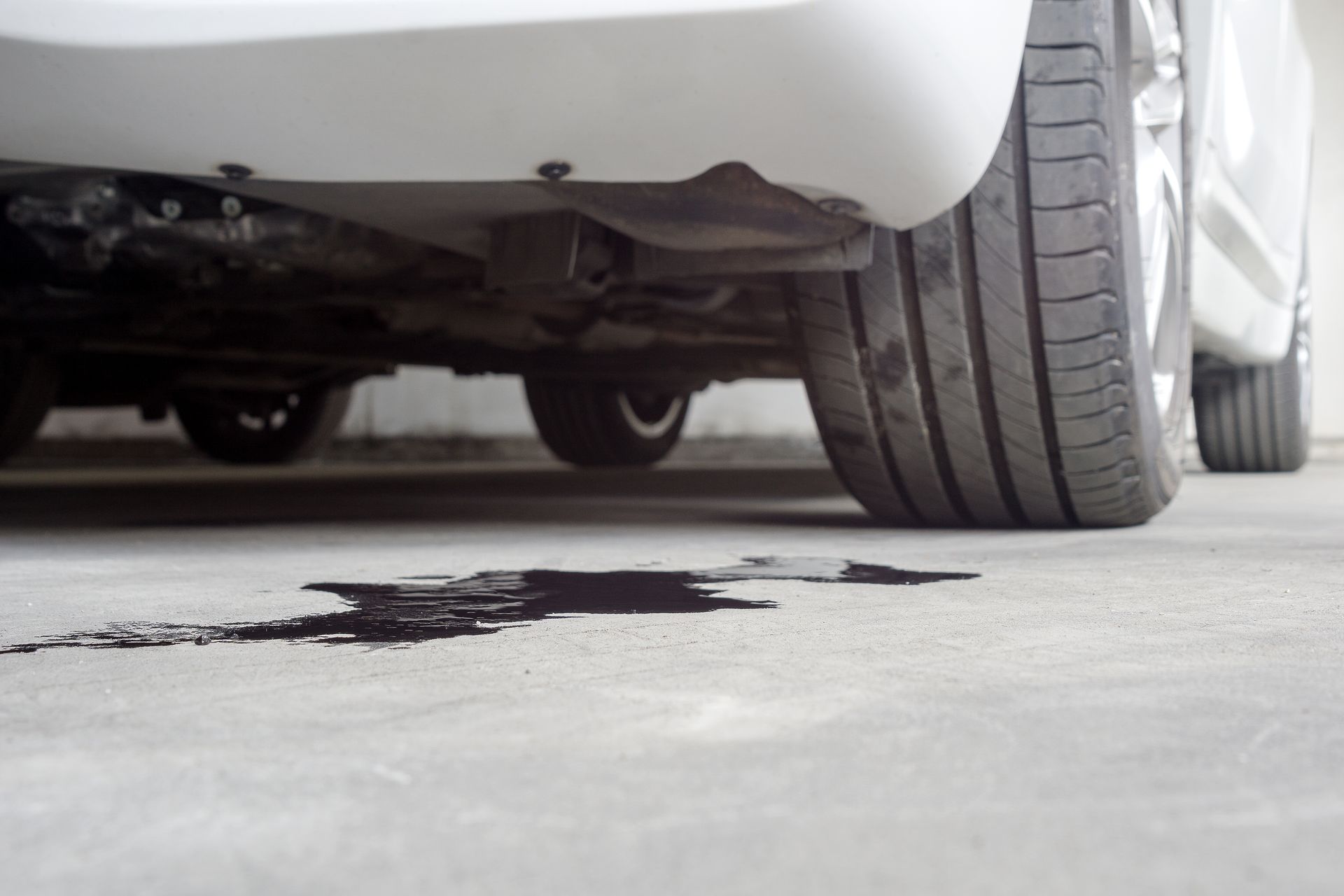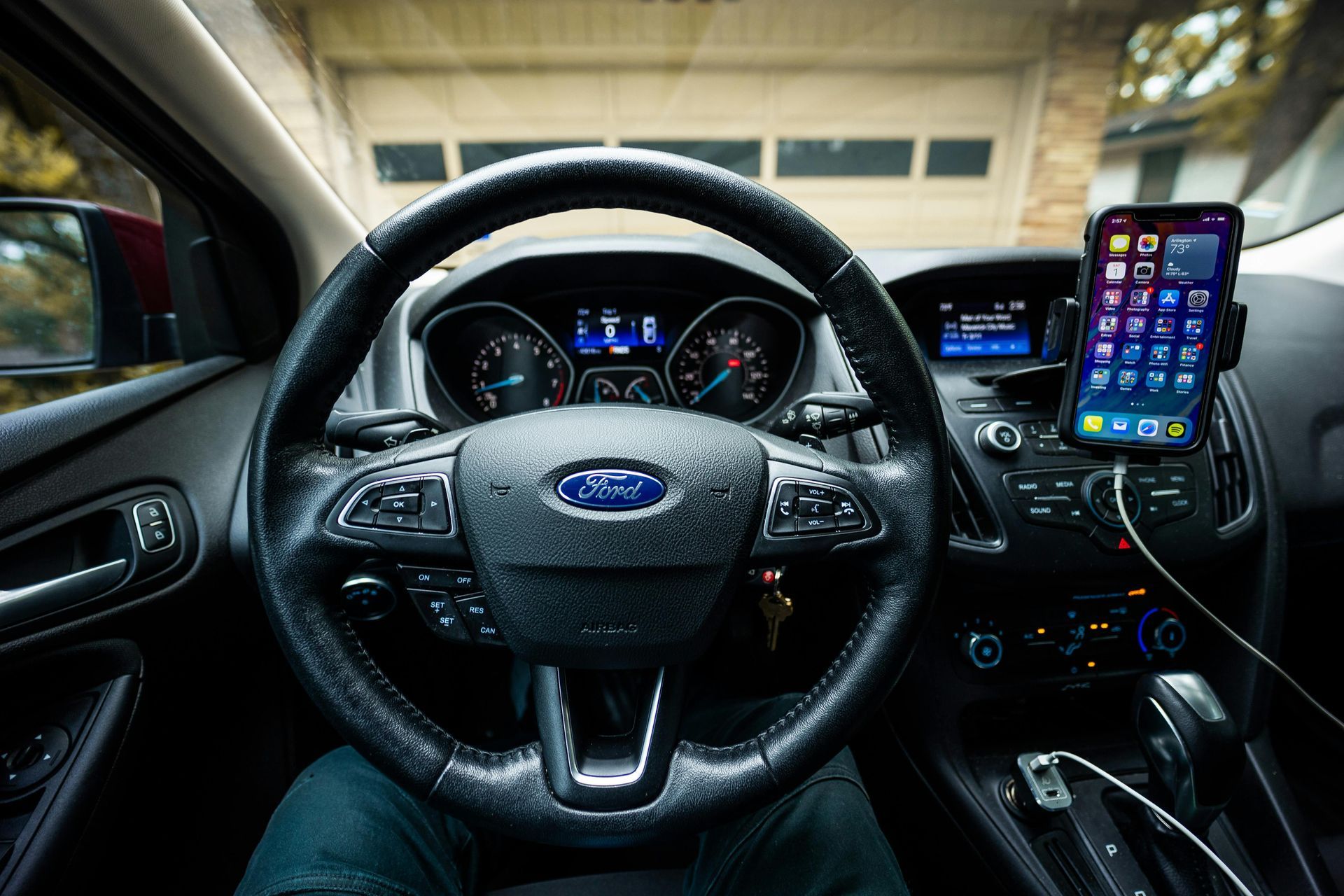Tire Measurements Explained: What Do The Numbers and Letters on Tires Mean?
Ever looked at your tire sidewall and felt confused by all those numbers and letters? You're definitely not alone. Understanding what the numbers on tires mean can feel overwhelming, but it doesn't have to be.
At Auto DR, we see drivers throughout Macomb and St. Clair counties every day who need help decoding their tire markings. Whether you're shopping for new tires or trying to understand what you currently have on your vehicle, knowing how to read tire size is more important than you might think.
Don't let tire confusion stress you out—call Auto DR at (586) 684-3368 for expert guidance. Our experienced technicians make understanding the letters and numbers on your tires simple, helping you make informed decisions about your vehicle's safety and performance.
How to Read A Tire’s Size: Complete Breakdown from Left to Right
When you examine your tire sidewall, you'll see a combination like "P225/65R16 95H." Each element tells a specific story about your tire's capabilities. Here's exactly how tire sizes work and what each component means for your driving experience.
Tire Measurements Explained: The Complete Sequence
| Position | Symbol | Meaning | Example | Description |
|---|---|---|---|---|
| 1st | Letter | Tire Type | P, LT, ST | Vehicle category designation |
| 2nd | 3 Numbers | Tire Width | 225 | Width in millimeters |
| 3rd | 2 Numbers | Aspect Ratio | 65 | Sidewall height percentage |
| 4th | Letter | Construction | R, D, F | Internal construction type |
| 5th | 2 Numbers | Wheel Diameter | 16 | Rim diameter in inches |
| 6th | 2-3 Numbers | Load Index | 95 | Weight capacity rating |
| 7th | Letter | Speed Rating | H | Maximum speed capability |
How Tire Sizes Work: Breaking It Down Step by Step
1. Tire Type—What Those First Letters Tell You
The first letter you see tells you exactly what kind of vehicle the tire was designed for. Here's what each one means:
P (Passenger): These are for regular cars, SUVs, and minivans—basically what most of us drive every day. They're designed for comfort and fuel efficiency, perfect for getting around Macomb and St. Clair counties.
LT (Light Truck): Built for pickup trucks, work vans, and vehicles that need to haul heavy loads or tow trailers. If you're a contractor or business owner who relies on your truck, you'll see LT on your tires.
ST (Special Trailer): These are only for trailers—never put them on a car or truck. If you own a boat trailer for weekend trips to Lake St. Clair, this is what you need.
2. Tire Width—How Wide Your Tire Actually Is
That three-digit number right after the letter? That's your tire's width measured in millimeters from sidewall to sidewall.
Common widths you'll see:
- 205mm: Smaller cars, great for gas mileage
- 225mm: Most sedans and crossovers
- 245mm: Larger SUVs and family vehicles
- 265mm: Full-size trucks and SUVs
Wider tires give you better grip, especially in dry conditions, but they can hurt your fuel economy. For Michigan's mix of weather conditions, there's usually a sweet spot that balances performance with practicality.
3. Aspect Ratio—The Height of Your Tire's Sidewall
This two-digit number tells you how tall your tire's sidewall is compared to its width. It's shown as a percentage.
Here's how it works: If you have a 225/65R16 tire, the sidewall height is 65% of 225mm, which equals about 146mm.
What this means for your ride:
- Lower numbers (45-55): Sportier handling but harsher ride
- Higher numbers (65-75): More comfortable, better for daily driving
- Michigan sweet spot: Usually 60-70 gives you the best balance
4. Construction Type—How Your Tire Is Built
Almost every modern tire has an "R" here, which stands for radial construction. This means the internal cords run perpendicular to the direction of travel.
Why radial matters:
- Better fuel economy
- Longer tire life
- Improved handling and safety
You might occasionally see "D" (diagonal) on older vehicles or specialty applications, but radial is the standard for good reason.
5. Wheel Diameter—The Size of Your Rim
This number tells you the diameter of the wheel (rim) in inches that the tire fits on.
Common sizes:
- 15-16 inches: Compact cars, best for ride comfort
- 17-18 inches: Most sedans and SUVs, good balance
- 19+ inches: Luxury and performance vehicles, sportier look
Bigger wheels look great, but they can be more expensive to replace and are more vulnerable to pothole damage—something to consider with Michigan's road conditions.
6. Load Index—How Much Weight Your Tire Can Handle
This number corresponds to how much weight each tire can safely carry. You'll see numbers like 87, 91, or 95.
Common load ratings:
- 87: 1,201 pounds per tire
- 91: 1,356 pounds per tire
- 95: 1,521 pounds per tire
Always match or exceed your vehicle's original load index. This is especially important if you regularly carry heavy loads or do any towing.
7. Speed Rating—Maximum Safe Speed
The final letter indicates the highest speed your tire can safely sustain.
Speed ratings you'll see:
- T: Up to 118 mph (most family cars)
- H: Up to 130 mph (performance sedans)
- V: Up to 149 mph (sports cars)
While Michigan speed limits don't require high ratings, tires with higher speed ratings often have better overall performance and handling characteristics.
Real-World Tire Size Examples
Example 1: P225/65R16 95H—A Typical Family Vehicle Tire
- P: Passenger car tire
- 225: 225mm wide (about 8.9 inches)
- 65: Sidewall height is 65% of the width
- R: Radial construction
- 16: Fits on 16-inch wheels
- 95: Can handle 1,521 pounds per tire
- H: Safe up to 130 mph
This is what you'd typically find on a mid-size sedan or crossover, perfect for families getting around Metro Detroit.
Example 2: LT265/75R16 123S—A Work Truck Tire
- LT: Light truck tire
- 265: 265mm wide (about 10.4 inches)
- 75: Taller sidewall for durability and load carrying
- R: Radial construction
- 16: Fits on 16-inch wheels
- 123: Can handle 3,417 pounds per tire
- S: Safe up to 112 mph
You'd see this size on pickup trucks used for work or heavy hauling—built tough for Michigan construction sites and job demands.
Other Important Tire Markings You Should Know
Your tire sidewall contains more than just the size information. Here are other important markings that can help you understand your tires better:
DOT Code and Tire Age
Every tire has a DOT code that ends with four digits telling you when it was made. For example, "2319" means the tire was manufactured in the 23rd week of 2019.
Why this matters: Tires should typically be replaced every 6-10 years regardless of tread depth, especially here in Michigan where temperature extremes can cause rubber to deteriorate faster.
Additional Tire Symbols
- M+S or M/S: Indicates mud and snow capability
- Mountain/Snowflake Symbol: True winter tire designation
- Tubeless: Modern tires that don't require inner tubes
- Max Pressure: The maximum inflation pressure (not your target pressure)
These markings help you understand what your tires can handle and when they might need replacing.
Why Understanding Tire Size Matters for Safety
Vehicle Performance Impact
- Handling: Proper sizes ensure predictable steering response
- Braking: Correct load index prevents tire failure under emergency braking
- Fuel Economy: Right size optimizes rolling resistance
- Speedometer Accuracy: Maintains accurate speed readings
Common Tire Size Mistakes to Avoid
- Ignoring Load Index: Can lead to tire failure
- Mismatched Sizes: Causes drivetrain stress
- Wrong Speed Rating: Reduces safety margins
- Oversized Tires: May rub against wheel wells
Professional Tire Services at Auto DR
Understanding what the numbers on your tires mean is just the beginning. At Auto DR in Ira, MI, our experienced technicians help drivers throughout Macomb and St. Clair counties with all their tire needs.
Whether you need help reading your current tire size, need your tires rotated, or you're ready for new tires, we're here to make the process simple and stress-free. Our team takes the time to explain what each number means for your specific vehicle and driving needs.
Don't let tire confusion keep you guessing—call Auto DR at (586) 684-3368 today. We'll help you understand exactly what your tires are telling you and ensure you have the right setup for safe, reliable driving on Michigan roads.
Frequently Asked Questions About the Letters and Numbers on Tires
What do the 3 numbers on a tire mean?
The three main numbers represent width, aspect ratio, and wheel diameter. In a tire size like 225/65R16, "225" is the width in millimeters, "65" is the sidewall height as a percentage of width, and "16" is the wheel diameter in inches. Think of it like measurements for a custom fit—each number ensures your tire works perfectly with your vehicle.
What's the difference between ST and LT tires?
ST (Special Trailer) tires are designed exclusively for trailers and should never be used on cars or trucks. LT (Light Truck) tires are built for pickup trucks, vans, and heavier vehicles that need extra load capacity. The key difference? ST tires have stiffer sidewalls for trailer stability, while LT tires balance durability with ride comfort. Using the wrong type can be dangerous! Always stick with what your vehicle requires.
How do I know what tire size I need for my car?
Check your vehicle's door jamb sticker—that's where manufacturers put the recommended tire size information. You can also find it in your owner's manual or sometimes in the glove compartment. If you're still unsure or the sticker is faded, bring your vehicle to Auto DR and we'll help you identify the correct size for your specific make and model.
Can I change my tire size to something different?
You can make some changes, but it's tricky and needs to be done correctly. Going to a slightly different size while keeping the overall diameter the same is called "plus sizing." However, changing sizes affects your speedometer, handling, and fuel economy. Before making any changes, have our technicians evaluate what's safe and appropriate for your vehicle.
Should I inflate my tires to the PSI shown on the sidewall?
No, definitely not! The PSI number on your tire sidewall is the maximum pressure the tire can handle, not what you should inflate to. Your vehicle's recommended pressure is lower and can be found on the sticker inside your driver's door jamb or in your owner's manual. Over-inflating to the max PSI will give you a harsh ride, reduce your tire's contact patch, and can actually be dangerous. Stick with your vehicle manufacturer's recommendation for the best performance and safety.
How often should I check my tire pressure?
You should check your tire pressure at least once a month and before any long trips. Michigan's temperature changes can really mess with your tire pressure. For every 10 degrees the temperature drops, you lose about 1-2 PSI. That means winter can leave you significantly under-inflated without you realizing it. Regular pressure checks help you catch slow leaks early and keep your tires performing safely.
Should I replace all four tires with the same size markings?
Absolutely! Mismatched tire sizes can cause serious problems with your vehicle's handling and even damage your drivetrain. If budget constraints mean you can only replace two tires, always put the new ones on the rear axle for better stability. Our team at Auto DR can help you plan the most cost-effective tire replacement strategy that keeps you safe.



